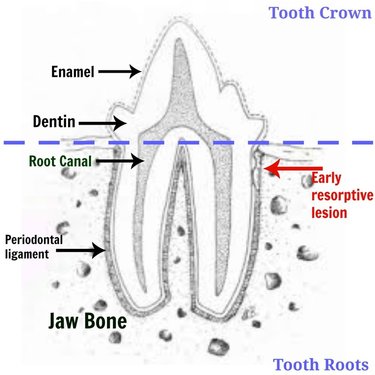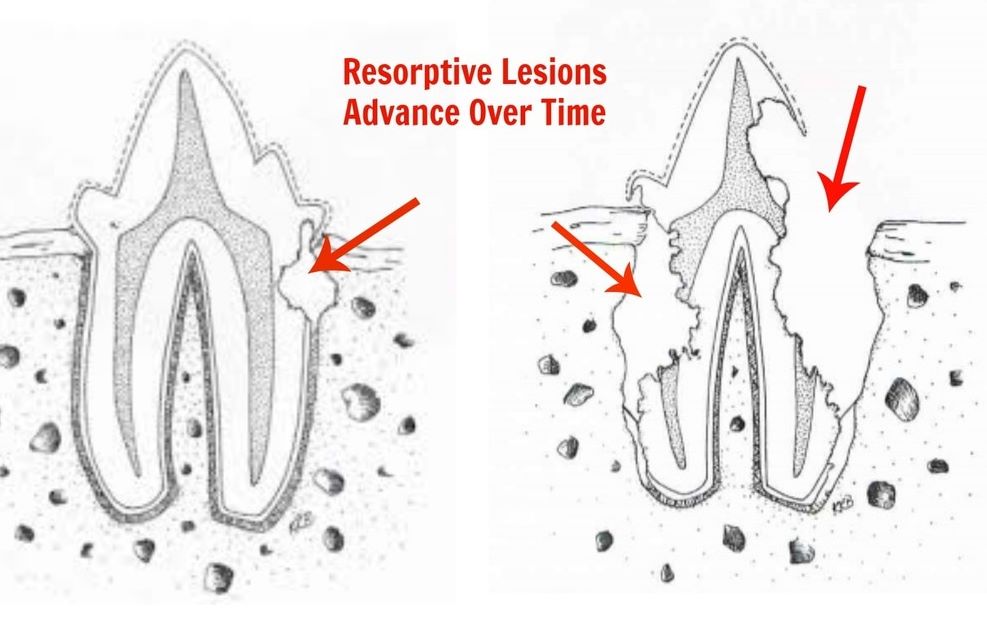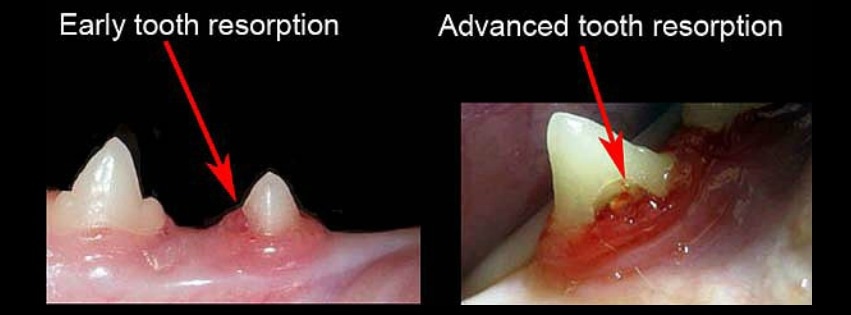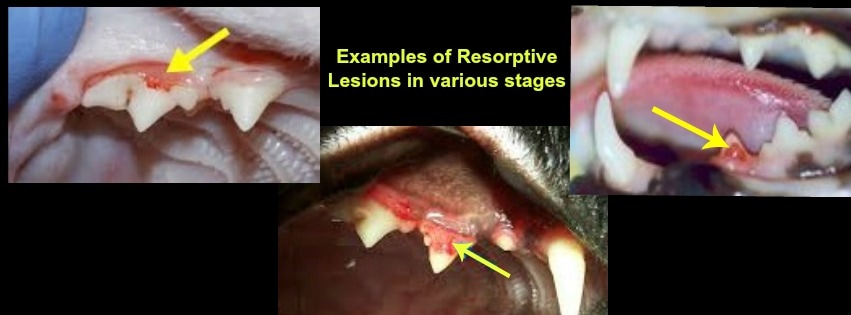Dental Resorptive LesionsResorptive lesions are known under many different names: "cervical neck lesions", "feline odontoclastic resorptive lesions (FORLs)", or "feline caries". These lesions are commonly found in cats, but can also occur rarely in dogs.
To understand what resorptive lesions are, we need to discuss a few things about normal tooth anatomy.
Despite ongoing research, no one has definitely proven what causes resorptive lesions to occur. Some theories include: improper nutrition, viral infection, autoimmune disorder, genetic predisposition, or periodontal infection. Any cat can develop resorptive lesions, but Siamese, Persians, and Abyssinians appear to be more susceptible. Cats of all ages can develop resorptive lesions, but most pets are diagnosed between the ages of 4 and 6 years. |
Symptoms of resorptive lesions:
Often these lesions start just below the gumline or are covered with gum tissue or tartar and, therefore, may be difficult to detect without a thorough oral examination. Cats are particularly good at hiding symptoms of discomfort, but you may notice:
Your veterinarian may identify these lesions during a routine checkup if your cat will allow an oral exam or during a dental cleaning under general anesthesia. A dental probe instrument can be used to identify the lesions or xrays may also be used. Resorptive lesions are progressive over time, so early identification and extraction of the affected tooth will prevent your cat having pain and infection.
There is no clear way to prevent resorptive lesions from occurring, but we strongly recommend a dental examination at least once a year. You should also talk to your veterinarian about methods for tartar prevention to keep other forms of dental disease at bay.
Often these lesions start just below the gumline or are covered with gum tissue or tartar and, therefore, may be difficult to detect without a thorough oral examination. Cats are particularly good at hiding symptoms of discomfort, but you may notice:
- mouth pain - your cat may avoid you tying to pet around the face or the lower jaw may "chatter" when you press around the gums.
- excessive drooling
- trouble eating - your cat may eat smaller meals, prefer to only chew with one side of the mouth, may gulp food instead of chewing and thus be more predisposed to vomiting, drop food out of the mouth, or seem to hesitate before eating.
- weight loss
Your veterinarian may identify these lesions during a routine checkup if your cat will allow an oral exam or during a dental cleaning under general anesthesia. A dental probe instrument can be used to identify the lesions or xrays may also be used. Resorptive lesions are progressive over time, so early identification and extraction of the affected tooth will prevent your cat having pain and infection.
There is no clear way to prevent resorptive lesions from occurring, but we strongly recommend a dental examination at least once a year. You should also talk to your veterinarian about methods for tartar prevention to keep other forms of dental disease at bay.




